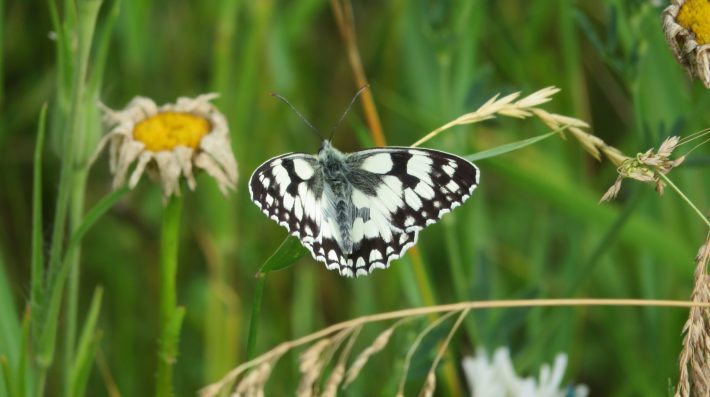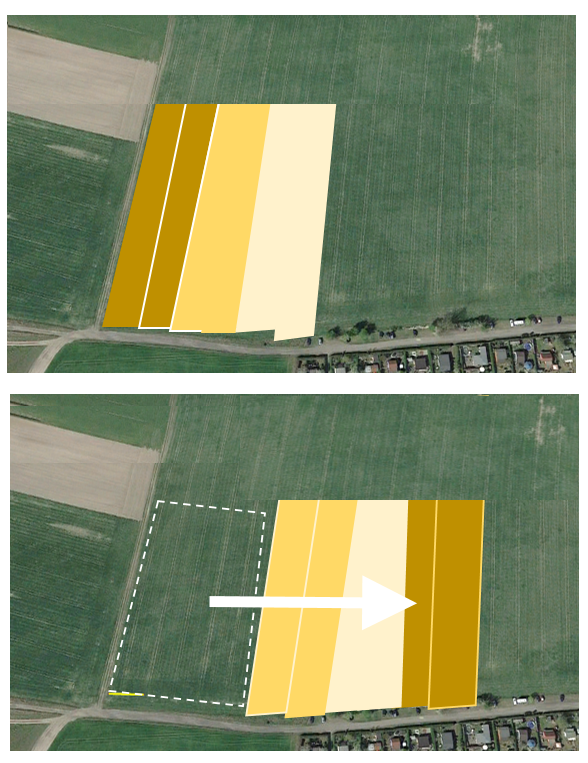Rolling wildflower blocks: benefits for biodiversity
University of Potsdam press release.
A Policy Direction published in the Journal of Applied Ecology details how rolling wildflower blocks can be a more effective measurement against insect decline than flower strips in agricultural landscapes.

Rolling wildflower blocks – instead of the already established flower strips – could be the more effective compensation measurement against insect decline. This is the conclusion of animal ecologist Prof. Dr. Jana A. Eccard from the University of Potsdam, who therefore proposes to include rolling wildflower blocks as a subsidised agri-environmental schemes.
The rolling wildflower blocks are combined of parallel short-lived wildflower strips of different ages to provide permanent resources for endangered plant and insect species in agricultural landscapes, thus to enable a diversity increase by one third. Her policy paper of the innovative rolling wildflower block is now published in the Journal of Applied Ecology.
Since the Krefeld study in 2017 at the latest, the insect decline particular in agri-ecosystems has entered people’s minds. But how can we effectively counteract this loss of insects? Researchers have increasingly criticised the compensations measures already in place, such as narrow-striped flower strips often placed at the border of the field.
Rolling wildflower blocks are intended to create new attractive habitats for insects, but can also act as ecological trap due to their short-lived nature: The flower strips attract populations, but resettled populations are destroyed when the strips are removed, so no long-term habitat is created. Further disadvantages can arise from the elongated shape and position of the strips, whereby especially mobile and already common species benefit from the creation of the structural elements.

In view of the criticisms, the Potsdam biologist Jana A. Eccard has developed and now published an innovative concept of rolling wildflower blocks as a possible new agri-environmental schemes. Heterogeneity and a compact block shape to prevent larger edge-effects, should promote diversity in the rolling wildflower Blocks. In the new floral element, parallel strips of different ages lie directly next to each other. Compared to the age-homogeneous flower strips, the number of animal and plant species in the heterogeneous rolling wildflower blocks can be increased by 28 to 39 percent.
In addition, the rolling wildflower block can “wander” across the fields through annual expansion as well as removal. This creates a long-term habitat in the agricultural landscape from which other animals, such as seed- and insect-eating birds and bats, can also benefit.
However, the current subvention for compensation measures excludes the creation of new adjacent flower strips. The biologist therefore advocates adapting the funding for agri-environmental schemes to explicitly promote rolling wildflower blocks and thus increase biodiversity in the agricultural landscape.
You can read the full article for free here:
Eccard, J. A. (2022). Can rolling composite wildflower blocks increase biodiversity in agricultural landscapes better than wildflowers strips? Journal of Applied Ecology, 00, 1–6. https://doi.org/10.1111/1365-2664.14147
Like what we stand for?
Support our mission and help develop the next generation of ecologists by donating to the British Ecological Society.